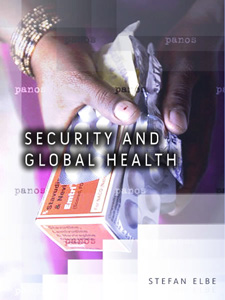A number of prominent health issues ranging from AIDS and SARS via anthrax terrorism scares through to avian and swine flu have recently raised the highest levels of political concern around the world but to what extent does the international spread of disease threaten global security?
Stefan Elbe
This study consists of a comparative case study analysis of four different kinds of health security issues, pandemic threats (such as swine flu, bird flu, and SARS), bio-terrorism threats (such as anthrax and smallpox), endemic diseases that threaten human security (such as AIDS, malaria and tuberculosis) and wider public health threats (such as smoking, obesity and alcoholism).

Through a series of interviews carried out with key participants in health security debates the project shows how international politics is no longer characterized by its preoccupation with a single disease, but by a need to confront what is now an epidemic of epidemics.
The study argues that the recent rise of health security debates can be shown to mark the ‘medicalization’ of security in at least three respects. These debates:
- Partially redefine the problem of insecurity in world politics as a medical problem.
- Facilitate a greater role for medical professionals in the analysis and formulation of security policy.
- Push for strategies of securing populations that necessitate a range of medical interventions, as can be seen in the rise of new ‘medical countermeasures’.
Practising security increasingly demands that citizens become patients, that states resemble huge hospitals, and that security itself becomes a technology of medical control.
Publications
Elbe, S. (2010) Security and Global Health: Toward the Medicalization of Insecurity. Cambridge: Polity Press, 2010.
Elbe, S. (2009) Virus Alert: Security, Governmentality and the AIDS Pandemic. New York: Columbia University Press, 2009.
Credit to sarihuella for the photograph


